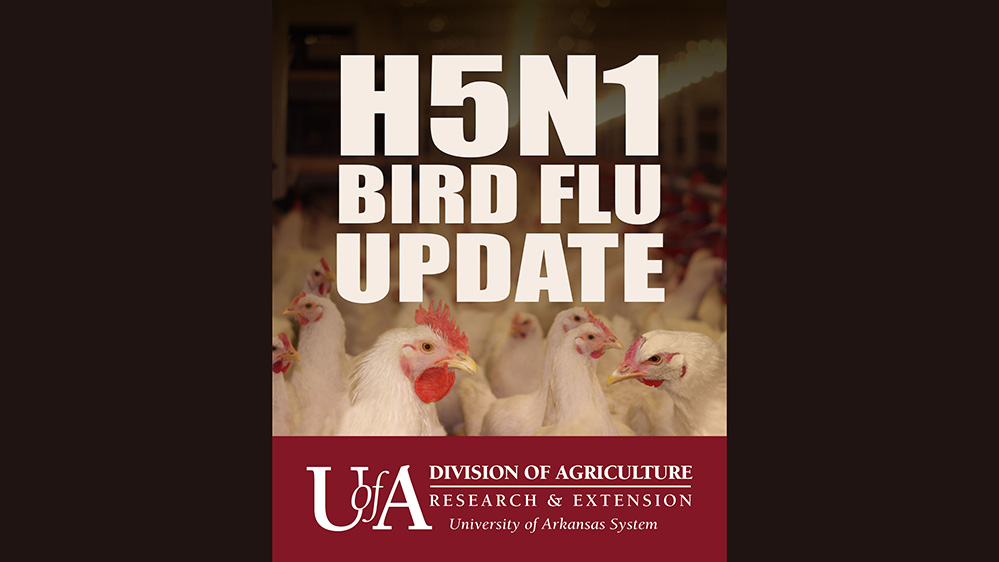Strong, Arkansas – The Arkansas Game and Fish Commission today confirmed that a hunter-harvested white-tailed deer taken in Union County tested positive for chronic wasting disease.
The deer was harvested in Felsenthal National Wildlife Refuge during the permit-based annual modern gun deer hunt. A CWD sample was collected at the check station for that hunt. That sample tested positive for CWD and was confirmed by the Wisconsin Veterinary Diagnostic Laboratory in Madison.
This is the first case of CWD in Union County. It is unknown where the source of this infection occurred, as it is more than 120 miles from the nearest previous positive case (Issaquena County, Mississippi) and more than 200 miles from the nearest known positive case of CWD in Arkansas.
According to AJ Riggs, wildlife health biologist for the AGFC, 307 CWD samples were submitted in Union County before this first positive case, with 107 of those being submitted since July 2021.
“While we didn’t want to find CWD outside of the current CWD Zone, this positive case confirms that we need to remain vigilant on a statewide level to look for the disease,” Riggs said.
According to Cory Gray, chief of the AGFC’s Research Division, the hunter who harvested the deer has been notified and arrangements are being made to dispose of the meat from the deer.
“With this positive case being so far from any previously known source, we’ve already begun working on ways to gather more samples from the surrounding area to determine the extent of the infection in this part of the state,” Gray said. “We have already begun making plans to place more CWD drop-off containers near the refuge for voluntary testing and are talking with local deer clubs and the U.S. Fish and Wildlife Service to get help in gathering additional samples while deer season is still open. We’re also reaching out to our counterparts at the Louisiana Department of Wildlife and Fisheries to coordinate with them and share data to get a better understanding of how far this may have spread.”
Felsenthal NWR Manager Michael Stroeh said, “We are working very closely with AGFC to provide any assistance needed.”
In keeping with the AGFC’s CWD Management and Response Plan, there will be no changes to deer-hunting regulations for the remainder of the 2021-22 deer hunting season.
AGFC Director Austin Booth says the agency will evaluate the need for any expansion of the CWD Management Zone and regulations concerning deer hunting during the hunting regulations-setting process once the season is over.

“We intend to hold public meetings about our findings at the conclusion of deer season, but the best way local hunters can help us is to take advantage of the free testing facilities and get their deer tested for CWD,” Booth said. “More samples means more chances to find any new concentrations of the disease and gives our staff a better picture of the landscape so they can make better-informed decisions moving forward.”
Hunters who wish to have their deer tested for CWD can voluntarily take the head of the deer, with 6 inches of neck still attached, to one of the AGFC’s network of participating taxidermists to have a sample tested for free. They also may drop off the head at one of dozens of CWD-testing collection stations positioned throughout the state. A list of CWD-testing facilities is available at www.agfc.com/cwd. Local landowners near Felsenthal National Wildlife Refuge also may contact the AGFC to participate in surveillance efforts in the area. For more information, call 501-412-5434.
CWD is a fatal neurological disease that affects deer, elk, caribou and moose. It was first detected in Arkansas Feb. 23, 2016. Since the first detection, AGFC has tested more than 37,877 deer and elk from across the state. To date, 1,182 deer and 35 elk have tested positive for the disease in Arkansas.
Research indicates that CWD is caused by a misfolded protein called a prion transmitted through feces, urine and saliva. Prions can survive for years in soil and plants. CWD can have an incubation period of at least 16 months, which means infected animals may not show immediate signs of disease. CWD prions accumulate throughout the body and affect an animal’s nervous system. The diseased prions cause normal cellular proteins to misfold into abnormal shapes, which accumulate until neural cells cease to function. Infected animals begin to lose weight, lose their appetite and develop an insatiable thirst. They may separate from their herds, walk in repetitive patterns, carry their head low, salivate, urinate frequently and grind their teeth.
Visit www.agfc.com/cwd for more information.




